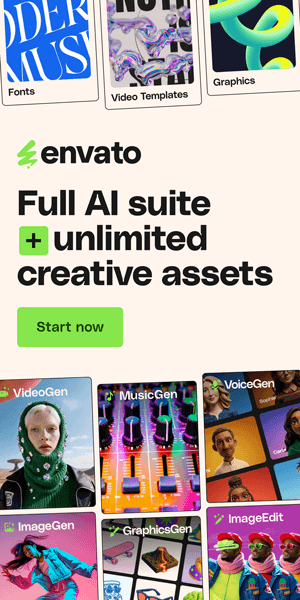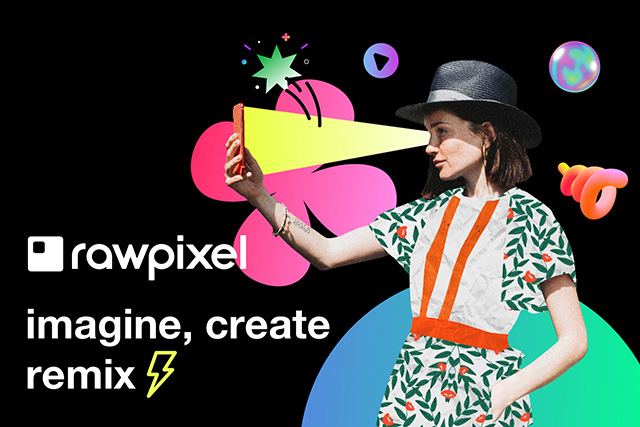The Magic of Blurs and Gradients in Graphic Design
Blurs and gradients are two of the most powerful tools in a graphic designer's arsenal. They can be used to create a wide range of effects, from adding depth and movement to evoking emotion and creating a sense of space.
What are Blurs and Gradients?
Blurs are a visual effect that softens the edges of an image or object. This can be done to create a sense of depth, movement, or mystery.
Gradients are a gradual transition from one color to another. They can be used to add visual interest, create a sense of space, or enhance typography
Creative Uses of Blurs and Gradients in Graphic Design
Creating Depth and Movement
One of the most common uses of blurs is to create a sense of depth and movement in a design. This can be done by blurring the background of an image or object, or by blurring the edges of a moving object.
For example, a graphic designer might use a blur to create the illusion that a product is floating in space. Or, they might use a blur to create a sense of speed and movement in a logo.
Adding Visual Interest
Gradients can be used to add visual interest to a design. This can be done by using contrasting colors, or by using complementary colors that create a sense of harmony.
For example, a graphic designer might use a gradient to create a colorful background for a website. Or, they might use a gradient to highlight a key element in a design.
Evoking Emotion
Different colors and combinations of colors can evoke different emotions in the viewer. Graphic designers can use this to their advantage by using blurs and gradients to create a desired mood or tone in their designs.
For example, a graphic designer might use a soft blue gradient to create a calming and relaxing atmosphere. Or, they might use a bold red gradient to create a sense of excitement and energy.
Creating a Sense of Space
Gradients can also be used to create a sense of space in a design. This can be done by using lighter colors in the foreground and darker colors in the background.
For example, a graphic designer might use a gradient to create the illusion of a receding horizon. Or, they might use a gradient to create a sense of depth in a 3D illustration.
Enhancing Typography
Gradients can also be used to enhance typography. This can be done by using a gradient to fill the letters of a word or phrase. Or, it can be done by using a gradient to create a shadow or highlight effect.
For example, a graphic designer might use a gradient to create a colorful and eye-catching headline. Or, they might use a gradient to add depth and dimension to a logo.
Developing a Brand Identity
Blurs and gradients can also be used to develop a brand identity. By using the same colors and techniques in all of their designs, graphic designers can create a cohesive and recognizable brand identity.
For example, a company might use a blue and green gradient in all of their marketing materials. This would help to create a sense of consistency and brand recognition.
Examples of Well-Designed Blurs and Gradients
Branding
Some great examples of well-designed blurs and gradients in branding include:
The Airbnb logo uses a soft blue gradient to create a sense of calm and relaxation.
The Spotify logo uses a bold green gradient to create a sense of energy and excitement.
The Instagram logo uses a colorful gradient to create a sense of fun and creativity.
Web Design
Some great examples of well-designed blurs and gradients in web design include:
The landing page for the website Recess uses a soft blue gradient to create a sense of calm and relaxation.
The website for Air Ocean Cargo uses a radial gradient to create a sense of movement and flow.
The website for Gucci Beauty uses a rotating background of soft gradients to create a visually appealing and engaging experience.
Packaging Design
Some great examples of well-designed blurs and gradients in packaging design include:
The packaging for the Dove soap brand uses a soft white gradient to create a sense of purity and cleanliness.
The packaging for the Lipton Peach Iced Tea brand uses a peach and yellow gradient to create a sense of freshness and summer.
The packaging for the Bounty chocolate bar uses a brown and white gradient to create a sense of richness and indulgence.
Illustration
Some great examples of well-designed blurs and gradients in illustration include:
The illustrations by Jessica Hische use soft, pastel gradients to create a dreamy and whimsical atmosphere.
The illustrations by Mike Perry use bold, saturated gradients to create a sense of energy and excitement.
The illustrations by Chris Spooner use a variety of different techniques to create unique and eye-catching results.
Motion Graphics
Some great examples of well-designed blurs and gradients in motion graphics include:
The title sequence for the TV show Stranger Things uses blurs and gradients to create a sense of mystery and suspense.
The music video for the song Royals by Lorde uses blurs and gradients to create a visually stunning and dreamlike world.
The commercial for the Apple Watch uses blurs and gradients to create a sense of speed and movement.
Tips for Using Blurs and Gradients Effectively
Here are a few tips for using blurs and gradients effectively in your designs:
Choose the right colors.
The colors you choose will have a big impact on the overall mood and tone of your design. Consider the message you want to convey and choose colors that will help you achieve that goal.
Consider the mood and tone of your design.
Do you want to create a sense of calm and relaxation? Or do you want to create a sense of energy and excitement? The colors and techniques you use will play a big role in determining the mood and tone of your design.
Use blurs and gradients sparingly.
A little bit of blur or gradient can go a long way. Overusing blurs and gradients can make your design look cluttered and unprofessional.
Experiment with different techniques.
There are many different ways to use blurs and gradients in your designs. Experiment with different techniques to see what works best for your project.
Conclusion
Blurs and gradients are two powerful tools that can be used to create a wide range of effects in graphic design. By using blurs and gradients effectively, you can add depth and movement to your designs, create visual interest, evoke emotion, create a sense of space, enhance typography, and develop a brand identity.
Tags
Subscribe
Join the Advise Graphics community and get exclusive design resources, tips, and updates delivered straight to your inbox.
Quick links
Copyright
© 2025 Advise Graphics. All rights reserved.
Cop© 2025 Advise Graphics. All rights reserved.











